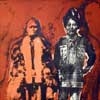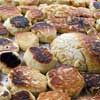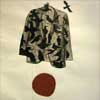Peter Morin
"The Art is Ceremony, In cities, in towns, in villages, in hearts. The Art is a method to engage with our breath."
Peter Morin is of the Crow clan of the Tahltan Nation of Telegraph Creek, BC. Peter spent 4 years working with Redwire Magazine, as a community educator and advocate for First Nations youth, through media, writing and art. As a practicing visual artist, Peter's work looks deeply into issues of First Nations identity, family and healing. His most recent work includes "Team Diversity Bannock, the World's Largest Bannock attempt", "7 Suits for 7 Days of Colonialism", and "Stop, Drop and Bingo".
Artist Statement
I want my art to honour my home, to honour the stories, words, and songs of my people from the traditional territory of the Tahltan Nation.
In my art practice, I am making a return that original self, my Tahltan self. Returning to look at this model and understand how it is intrinsic to my existence. I now recognize the favorite places of my childhood, places in the traditional Tahltan territory as foundational to my identity. I work towards becoming reconnected to these places,
about honouring this history, and about re-learning our stories, songs, and language. The work has always been about these stories, and about my grandmother's teaching.
My training is in painting, printmaking, and drawing. My art has brought together reflections of the land and community to build a deeper understanding of the effects of colonialism. At my 2004 solo exhibit, "Stop Drop and Bingo", featured at the Urban Shaman Gallery, the works reflected on bingo as a container for ideas surrounding identity, community and the effects of historical narratives on First Nations identity.
As a part of the two-person exhibition "Futuristic Regalia", at the grunt gallery, I presented an entirely new body of work based in textile, referring to button blanket regalia, and printmaking. This work addresses issues of safety, cultural clothing and ideas around urban First Nations identity.
My art is a record of the process that I make each day within the understanding of my culture and language. My voice is Tahltan. It comes from the land, from the traditional Tahltan territory.


